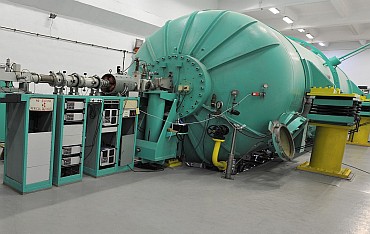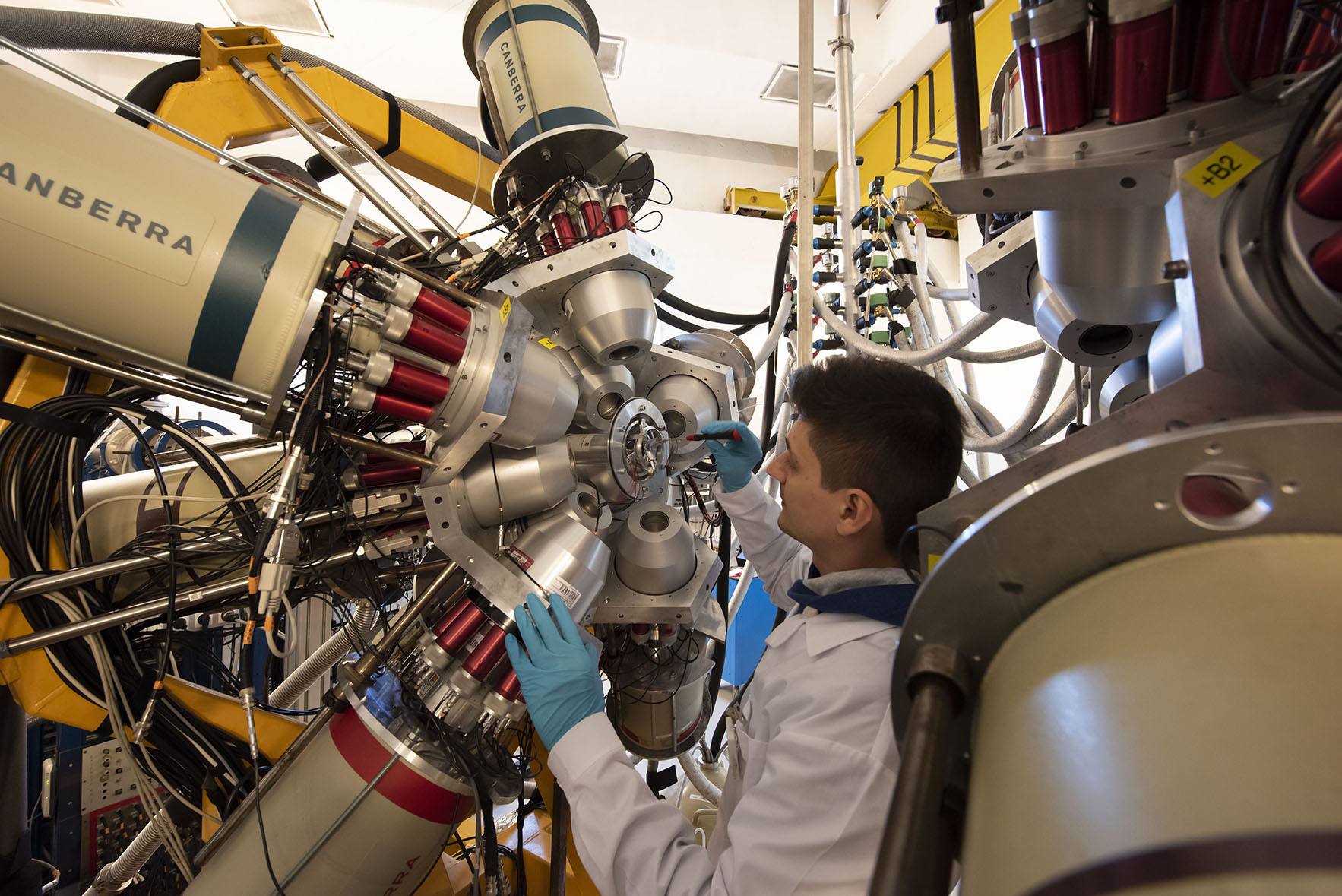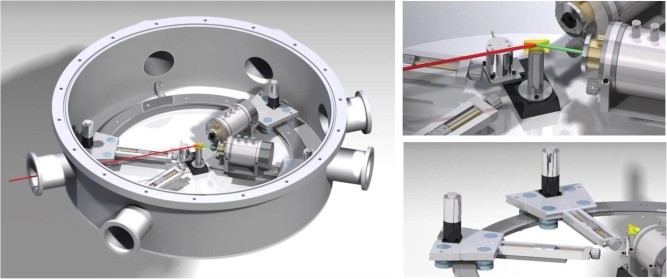


Many of the experiments performed at the 9 MV Tandem of the "Horia Hulubei" National Institute of Physics and Nuclear Engineering
(IFIN-HH) in the last years were focused on the measurement of lifetimes of nuclear states. A wide range of such lifetimes was covered,
from tens of femtoseconds by using the Doppler Shift Attenuation Method, to picoseconds using the RDDS method and to nanosecond range
using the newly developed in-beam fast-timing method. The setup used in these experiments was in continuous improvement by increasing
the number of detectors, using various detector types and changing their geometry. By consequence, a new array was needed, with a stable
geometrical setup and an improved flexibility.
Recently a multidetector setup dedicated to γ-ray spectroscopy studies was built and installed. ROSPHERE (ROmanian array for SPectroscopy
in HEavy ion REactions) is composed by a total of maximum 25 detectors of two types: Compton suppressed HPGe detectors and fast LaBr3(Ce)
scintillator detectors. It is a powerful instrument for lifetime measurements using the in-beam Fast Electronic Scintillation Timing (FEST)
method or, together with a state of the art plunger device, using the Recoil Distance Doppler Shift (RDDS) method. If the experiment
requires high resolution and high efficiency, ROSPHERE can be operated as a full HPGe array.
Instrument Responsible: Andrei Turturica
More details on ROSPHERE Array webpage

The experimental set-up working on the zero-degree beam-line of the 9MV Tandem Accelerator at IFIN-HH now offers a high accuracy and
repeatability of the heavy ions nuclear physics experiments. This is achieved by an automated moving system, placed
inside a circular reaction chamber, consisting of four moving arms covering a complete 360 degrees. Each arm can hold
one detector and is powered by a stepper motor having the possibility of micro-stepping up to 1/256 if the application
requires, with a reduction gear box of 60:1 and a resolver acting as a witness for eventual position corrections.
Moreover, the target support, positioned in the center of the chamber, is also assisted by a stepper motor and can
rotate over 360 degrees clockwise or counter clockwise. Two identical Delta E - E telescopes have received an upgrade
in both the gas automated pressure and constant flow regulation by using a software implemented PID
(Proportional-Integral-Derivative) controller.
Instrument Responsible: Horia Petrascu
More details on Scattering Chamber webpage

Five other beamlines are available at the 9MV Tandem Accelerator offering
possibilities for the installation of ad-hoc experimental setups performing various types of measurements.
Instrument Responsible: Constantin Mihai
More details on Other Beamlines webpage

The laboratory was developed to support the nuclear physics experiments performed mainly at the IFIN-HH 9 MV Tandem Accelerator
or at other international research facilities in the frame of scientific collaborations (CERN, IN2P3, TUM, IKP, JINR, etc).
The laboratory provides thin films of various thicknesses from several tens of μg/cm2 to several hundreds of mg/cm2
made from both naturally occurring materials and stable enriched isotopes. Such thin films (called “targets”) are
dedicated for different types of nuclear structure experiments: nuclear structure and lifetimes measurements of excited
nuclear states using γ-ray spectroscopy techniques (Doppler shift attenuation, plunger, and fast-timing), nuclear
structure studies using the activation technique, cross-section measurements of interest for nuclear astrophysical
processes, etc.
To assure good target quality the laboratory includes state-of-the-art equipment used for thin-film fabrication
technology and consist of Physical Vapor Deposition (PVD) and mechanical rolling techniques.
Target Responsible: Nicoleta-Mihaela Florea
More details on Target Laboratory webpage
© Copyright 2022. All Rights Reserved.
